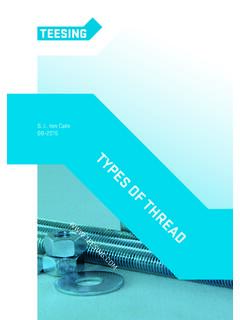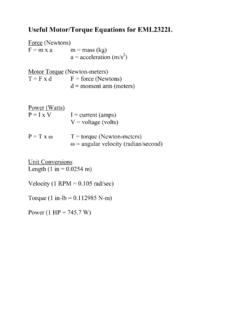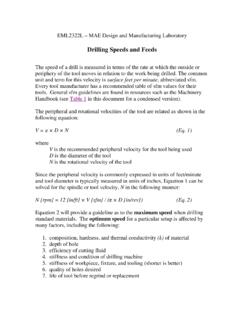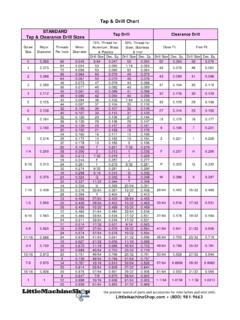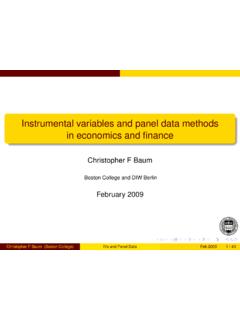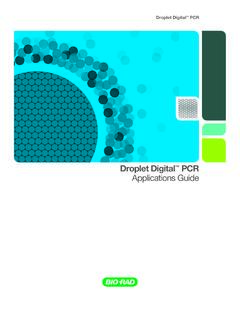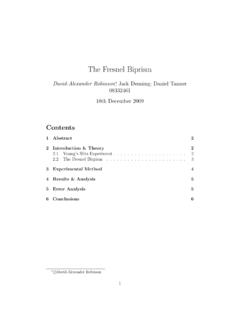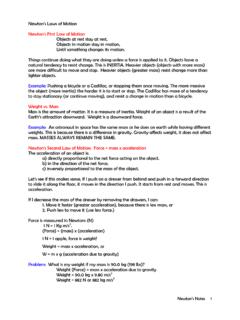Transcription of Chapter 2 Aircraft Structure - University of Florida
1 2-1 IntroductionAn Aircraft is a device that is used, or intended to be used, for !ight, according to the current Title 14 of the Code of Federal Regulations (14 CFR) Part 1, De"nitions and Abbreviations. Categories of Aircraft for certi"cation of airmen include airplane, rotorcraft, glider, lighter-than-air, powered-lift, powered parachute, and weight-shift control. 14 CFR part 1 also de"nes airplane as an engine-driven, "xed-wing Aircraft that is supported in !ight by the dynamic reaction of air against its wings. Another term, not yet codi"ed in 14 CFR part 1, is advanced avionics Aircraft , which refers to an Aircraft that contains a global positioning system (GPS) navigation system with a moving map display, in conjunction with another system, such as an autopilot.
2 This Chapter provides a brief introduction to the Structure of Aircraft and uses an airplane for most illustrations. Light Sport Aircraft (LSA), such as weight-shift control, balloon, glider, powered parachute, and gyroplane have their own handbooks to include detailed information regarding aerodynamics and control. Aircraft StructureChapter 22-2 Figure 2-2. Illustrates the pitch, roll, and yaw motion of the Aircraft along the lateral, longitudinal, and vertical axes, 2-1. The four and Basic AerodynamicsIn order to understand the operation of the major components and subcomponents of an Aircraft , it is important to understand basic aerodynamic concepts. This Chapter brie!y introduces aerodynamics; a more detailed explanation can be found in Chapter 4, Aerodynamics of forces act upon an Aircraft in relation to straight-and-level, unaccelerated !
3 Ight. These forces are thrust, lift, weight, and drag. [Figure 2-1] Thrust is the forward force produced by the powerplant/propeller. It opposes or overcomes the force of drag. As a general rule, it is said to act parallel to the longitudinal axis. This is not always the case as explained is a rearward, retarding force, and is caused by disruption of airflow by the wing, fuselage, and other protruding objects. Drag opposes thrust, and acts rearward parallel to the relative is the combined load of the airplane itself, the crew, the fuel, and the cargo or baggage. Weight pulls the airplane downward because of the force of gravity. It opposes lift, and acts vertically downward through the airplane s center of gravity (CG).Lift opposes the downward force of weight, is produced by the dynamic effect of the air acting on the wing, and acts perpendicular to the !
4 Ightpath through the wing s center of Aircraft moves in three dimensions and is controlled by moving it about one or more of its axes. The longitudinal or roll axis extends through the Aircraft from nose to tail, with the line passing through the CG. The lateral or pitch axis extends across the Aircraft on a line through the wing tips, again passing through the CG. The vertical, or yaw, axis passes through the Aircraft vertically, intersecting the CG. All control movements cause the Aircraft to move around one or more of these axes, and allows for the control of the airplane in !ight. [Figure 2-2] One of the most signi"cant components of Aircraft design is CG. It is the speci"c point where the mass or weight of an Aircraft may be said to center; that is, a point around which, if the Aircraft could be suspended or balanced, the Aircraft would remain relatively level.
5 The position of the CG of an Aircraft determines the stability of the Aircraft in !ight. As the CG moves rearward (towards the tail) the Aircraft becomes more and more dynamically unstable. In Aircraft with fuel tanks situated in front of the CG, it is important that the CG is set with the fuel tank empty. Otherwise, as the fuel is used, the Aircraft becomes unstable. [Figure 2-3] The CG is computed during initial design and construction, and is further affected by the installation of onboard equipment, Aircraft loading, and other 2-4. Airplane 2-5. Truss-type fuselage Structure . Figure 2-3. Center of gravity (CG).Major ComponentsAlthough airplanes are designed for a variety of purposes, most of them have the same major components. [Figure 2-4] The overall characteristics are largely determined by the original design objectives.
6 Most airplane structures include a fuselage, wings, an empennage, landing gear, and a powerplant. FuselageThe fuselage is the central body of an airplane and is designed to accommodate the crew, passengers, and cargo. It also provides the structural connection for the wings and tail assembly. Older types of Aircraft design utilized an open truss Structure constructed of wood, steel, or aluminum tubing. [Figure 2-5] The most popular types of fuselage structures used in today s Aircraft are the monocoque (French for single shell ) and semimonocoque. These Structure types are discussed in more detail under Aircraft construction later in the wings are airfoils attached to each side of the fuselage and are the main lifting surfaces that support the airplane in !
7 Ight. There are numerous wing designs, sizes, and shapes used by the various manufacturers. Each ful"lls a certain need with respect to the expected performance for the particular airplane. How the wing produces lift is explained in Chapter 4, Aerodynamics of may be attached at the top, middle, or lower portion of the fuselage. These designs are referred to as high-, mid-, and low-wing, respectively. The number of wings can also vary. Airplanes with a single set of wings are referred to as 2-4 Figure 2-6. Monoplane (left) and biplane (right).Figure 2-7. Wing , while those with two sets are called biplanes. [Figure 2-6] Many high-wing airplanes have external braces, or wing struts, which transmit the !ight and landing loads through the struts to the main fuselage Structure .
8 Since the wing struts are usually attached approximately halfway out on the wing, this type of wing Structure is called semi-cantilever. A few high-wing and most low-wing airplanes have a full cantilever wing designed to carry the loads without external principal structural parts of the wing are spars, ribs, and stringers. [Figure 2-7] These are reinforced by trusses, I-beams, tubing, or other devices, including the skin. The wing ribs determine the shape and thickness of the wing (airfoil). In most modern airplanes, the fuel tanks either are an integral part of the wing s Structure , or consist of !exible containers mounted inside of the wing. Attached to the rear or trailing edges of the wings are two types of control surfaces referred to as ailerons and !
9 Aps. Ailerons extend from about the midpoint of each wing outward toward the tip, and move in opposite directions to create aerodynamic forces that cause the airplane to roll. Flaps extend outward from the fuselage to near the midpoint of each wing. The !aps are normally !ush with the wing s surface during cruising !ight. When extended, the !aps move simultaneously downward to increase the lifting force of the wing for takeoffs and landings. [Figure 2-8]2-5 Figure 2-8. Types of ! 2-9. Weight-shift control Aircraft use the shifting of weight for 2-10. Empennage Types of WingsWith the Federal Aviation Administration s (FAA) recent addition of the LSA category, various methods are employed to control !ight and to produce lift. These methods are discussed in Chapter 4, Aerodynamics of Flight, which provides information on the effect controls have on lifting surfaces from traditional wings to wings that use both !
10 Exing (due to billowing) and shifting (through the change of the Aircraft s CG). Handbooks speci"c to each category of LSA are available for the interested pilot. LSA illustrate various lifting surfaces and control methods. For example, the wing of the weight-shift control Aircraft is highly swept, and the shifting of weight to provide controlled !ight. [Figure 2-9] EmpennageThe empennage includes the entire tail group and consists of "xed surfaces such as the vertical stabilizer and the horizontal stabilizer. The movable surfaces include the rudder, the elevator, and one or more trim tabs. [Figure 2-10]The rudder is attached to the back of the vertical stabilizer. During !ight, it is used to move the airplane s nose left and right. The elevator, which is attached to the back of the horizontal stabilizer, is used to move the nose of the airplane up and down during !
